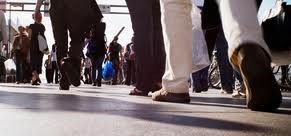 As more retailers embrace Beacon technology, could it be that this new technology is the future for these bricks and mortar retailers.
As more retailers embrace Beacon technology, could it be that this new technology is the future for these bricks and mortar retailers.
Back in August Macy’s announced it would roll out over 4,000 iBeacons to its 786 stores across the USA and a whole host of other retailers and brands have now joined them.
Crown Estates, who own a good chunk of London’s West End shops have developed a Beacon app and installed Beacons into many of its Regent Street Stores. Real estate developer Simon is deploying Beacons across its 240 malls and shopping centres across the USA, and Apple and Disney both announced it was deploying beacon technology at all its stores to help connect with their customers based on real-time data regarding each shopper’s location at those sites.
Whilst retailers are all racing to implement Beacon technology to engage with their customers – here are just a few of our thoughts before you consider using Beacons in Retail:
1) The customer has to download an application in order to interact with any Beacon placed in store. Is this one app? Or will they have to have one per store? There are some applications that will work with multiple stores, but in order to be able to push relevant content and promotion messages the application needs to be connected to some the in-store loyalty scheme. The big question here is, as a customer how many individual store apps would I want on my phone? Make yours stand out!
2) How do I get the app? Like with all traditional marketing, you have to make your customers aware that you have an application that could benefit them, you need to promote this to them in the same way you market all your other products. What are the benefits? There will be an education process to make your customers aware they can get discounts and incentives on their device.
3) I’ve downloaded the store’s application, I walk into the store – will my device automatically connect with a stores Beacons? No – you have to have your Bluetooth turned on and only then will your phone pick up the Beacons. A significant amount of in-store marketing will have to also be done to promote this.
4) My Bluetooth is on, I have the app, when I walk past the beacon what am I likely to receive? This very much depends on the retailer and how integrated their application is. At a basic level you may get a notification alerting you to a sale or discount on items in the store. However retailers with their own loyalty schemes and fully integrated customer databases, could actually send you out notifications about products that it knows you’ve bought in the past, offering you specific discounts on these items. This retailer will use your previous buying profile to maximise the chances of you spending more whilst in their store.
5) How many alerts will I receive? Now this is the question! A recent study by inMarket found that customer engagement decreases when platforms oversaturate. The study found that if a customer received more than one push notification from a Beacon platform in the same store, app usage among exiting users declines by 313 percent. The same goes if the notifications customers received were irrelevant; the app gets deleted.
6) Can a store track me as I walk around their store. Yes – if you have your Bluetooth turned on and you have the app on your phone. This is a great way for retailers to get a better understanding of their customers habits in store; what aisles they visit, how long they dwell, repeat visits etc. Using this information it can provide intelligence that will help with future store layouts. Of course if you turn your Bluetooth off – you can no longer be tracked. The incentive for the customer here is to provide them with store maps to help them locate items within your store a lot quicker.
7) Does it work on other devices other than Apple? Yes! Apple has definitely stolen the march here and even cornered the phrase ‘iBeacon’. But Beacon technology will also work across Android and Windows, depending on which Beacon vendor you decide to go with. (see also Android devices more optimised for Beacon Technology)
There are some great benefits why as a retailer you should invest in Beacon technology, some consumers will completely embrace it, others will turn off. But like any other retail marketing, try it, test it, learn from it. If its done right you’ll get a much better understanding of your consumer buying habits and see an increase in your sales.
Retailers trialling iBeacons right now:
Crown Estate, UK
Macy’s, USA
Apple, USA
Disney, USA
Trinity Shopping Centre – Leeds, UK
House of Frazer, UK
Target, USA
American Eagle, USA
![]() Five hundred buses in Romania’s capital, Bucharest, will soon receive Bluetooth Low Energy (BLE) beacons. The beacons will serve to guide blind passengers on and off buses, without the need for any assistance. So far, forty of the BLE beacons have been installed already, with the rest expected to be in place by the end of August.
Five hundred buses in Romania’s capital, Bucharest, will soon receive Bluetooth Low Energy (BLE) beacons. The beacons will serve to guide blind passengers on and off buses, without the need for any assistance. So far, forty of the BLE beacons have been installed already, with the rest expected to be in place by the end of August.